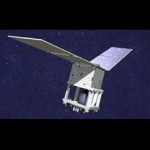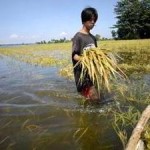
Geneva – The largest coordinated research project ever undertaken into the Arctic and Antarctic regions yielded a treasure trove of information which will shape our understanding of the Polar Regions, global oceans, climate and climate change for decades ahead, according to a summary of the research released March 28.
“Understanding Earth’s Polar Challenges”, was presented to the Arctic Science Summit Week in Seoul, Republic of Korea. The summary prepared by the International Council for Science (ICSU) and World Meteorological Organization (WMO) Joint Committee presents the findings from International Polar Year – a massive research effort involving some 50,000 participants from more than 60 nations between March 2007 and March 2009.
The research provided convincing evidence of the wide-spread effects of climate change in the Polar Regions at a time when the global environment is changing faster than ever in human history. Snow and ice are declining, affecting human livelihoods, plant and animal life, atmospheric and ocean circulation, according to the summary.
Parts of the Arctic and the Antarctic Peninsula are warming twice as fast as the global average. Warming in the Antarctic is much more wide-spread than it was thought prior to International Polar Year. The Greenland and Antarctic ice sheets are losing mass contributing to the sea level rise. The drastic changes in the Arctic Ocean are evidenced by the record minimum summer sea ice extent in 2007, which was followed by two other low-ice summers in the Arctic, according to the summary.
“International Polar Year invigorated polar science, led to an unprecedented level of action, and attracted global attention to the Polar Regions at a critical moment in the changing relation between humanity and the environment,” said WMO Secretary-General Michel Jarraud and ICSU President Catherine Bréchignac in their joint Preface to the 720-page summary. The two organizations co-sponsored International Polar Year.
Compiled by some 300 authors and reviewers, the summary reveals how the research established large-scale baseline data sets which can be used to assess and predict future change in areas including polar environments and oceans, biodiversity and ecosystem processes. It advanced coordinated satellite observations of polar ice sheets and new measurement systems for permafrost and polar atmosphere.
Some Key Findings
- International Polar Year studies documented key connections between the poles and global ocean and atmospheric processes. Changes in the Arctic Ocean are transmitted through the sub-arctic seas, affecting ocean circulation in the North Atlantic. Evidence revealed unprecedented large-scale interactions leading to a warmer Arctic and colder conditions in mid-latitudes (which include many populated areas).
- International Polar Year provided new data on the role of plate tectonics in the main polar corridors for oceanic circulation. As a result, the tectonic map of Antarctica is being redrawn.
- Using Antarctic as a unique vantage point, based on the South Polar Telescope data, astronomers detected a previously unknown class of galaxy clusters. This discovery significantly extends our knowledge about the abundance of galaxy clusters in the universe and their age.
- International Polar Year increased understanding of the microbiological processes and release of greenhouse gases to the atmosphere from soils suffering permafrost degradation. This, combined with an upgraded network of stations for permafrost measurements, will improve monitoring of future changes.
- Biological systems in both Polar Regions were found to be more closely linked to each other than expected. This is supported by the identification of more than 1000 previously unknown marine animal species – of which 250 were identified to be common to both Polar Regions – and the remarkable similarity of the microbial systems between the poles.
- The discovery of new polar microorganisms provides fundamental insights into their polar habitats and their evolution under a changing climate.
In the social and human field, the polar research will provide long-term benefits to many stakeholders, including polar residents and indigenous people. It increased understanding of how indigenous knowledge could be combined with instrumental data in monitoring the changes in polar ice, snow and vegetation cover, marine and terrestrial animal migrations, behavioral patterns of polar animals, birds, and fishes.
The International Polar Year created a critical momentum in the form of substantial new funding for polar research and monitoring programs, new observational and forecast technologies. It helped consolidate a new trans-disciplinary approach that includes biology, human health, social sciences and the humanities, in addition to meteorology, glaciology, oceanography, geophysics, geology, and other traditional polar research fields.
Last, but not least, the International Polar Year trained a new generation of scientists and leaders who are determined to carry this legacy into the future. It offered an inspiring window into the capabilities of modern interdisciplinary and international science.
The full text of the summary volume is available at:
www.wmo.int/pages/themes/wmoprod/index_en.html
and
www.icsu.org/publications/reports-and-reviews/ipy-summary













